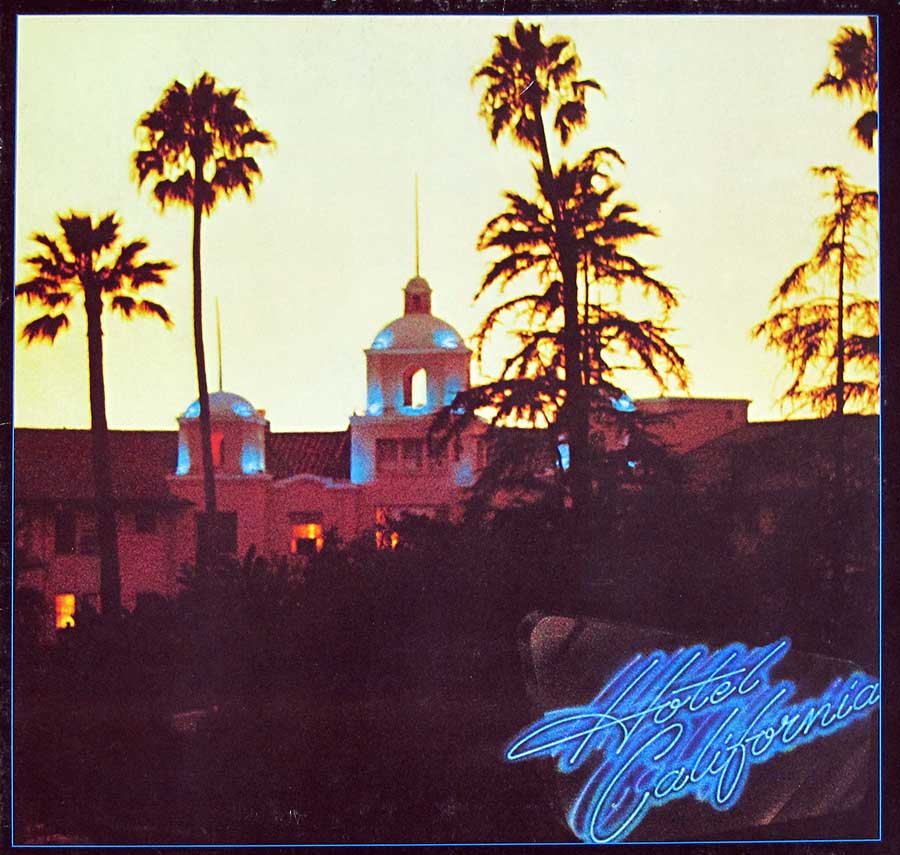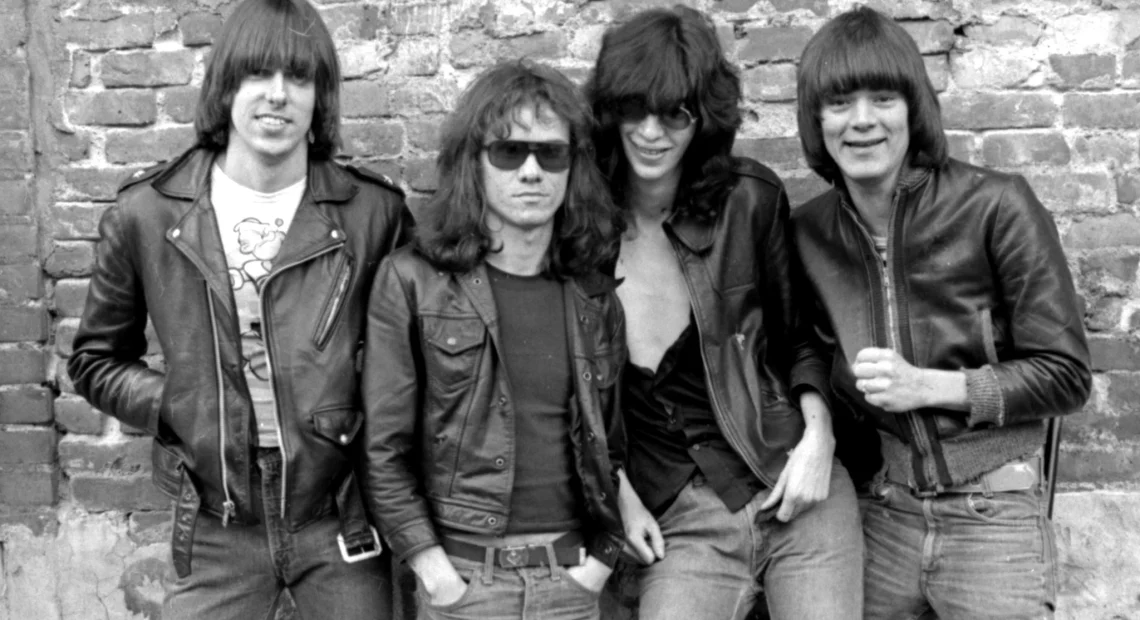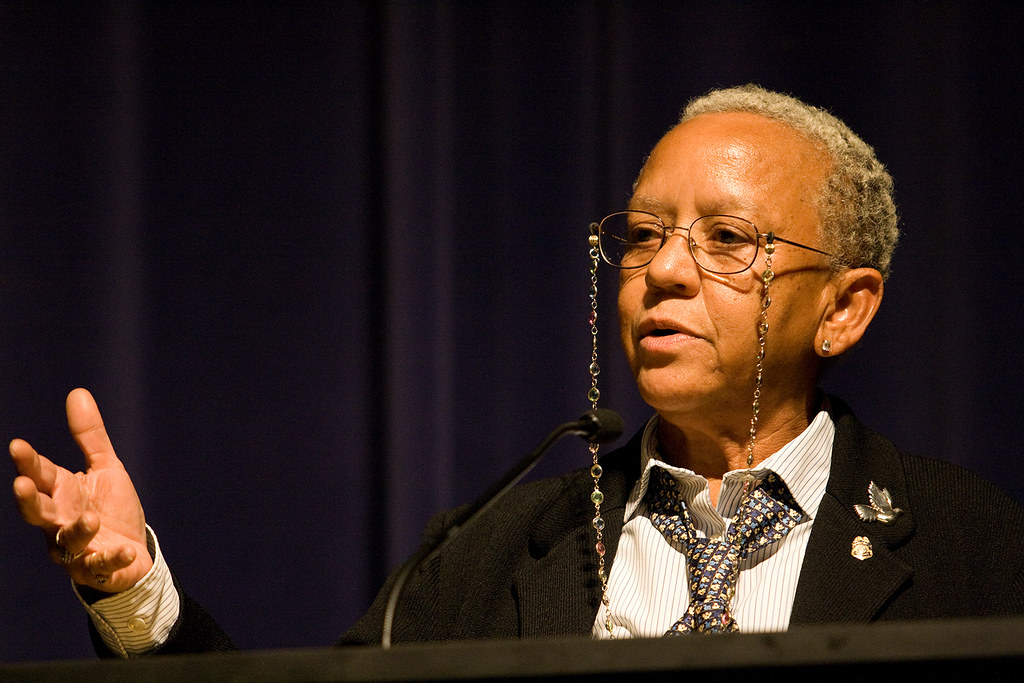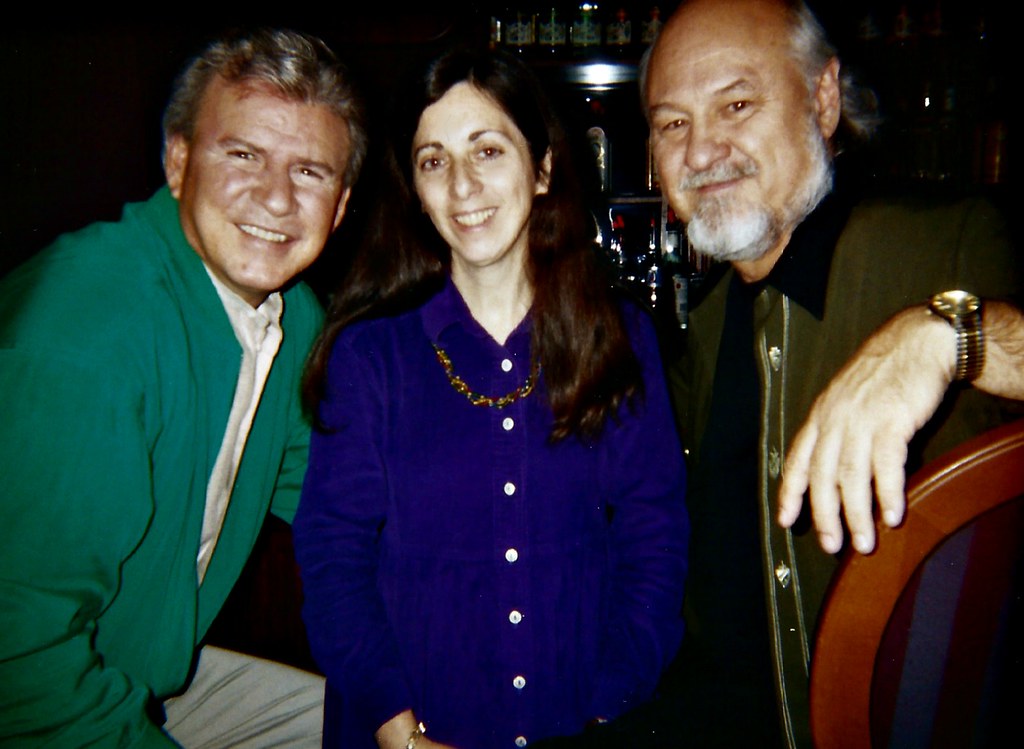
The music world, for all its glittering stages and soaring anthems, often hides a darker truth beneath the surface: sometimes, the creative synergy that produces legendary tracks is fueled by—or ultimately extinguished by—intense personal animosity. While we marvel at the intricate harmonies and electrifying solos, the stories behind the scenes can be anything but harmonious, filled with clashing egos, unresolved tensions, and profound disagreements that make the very idea of sharing a recording studio an utter impossibility. It’s a fascinating, if sometimes heartbreaking, look into the human element of artistic creation.
Indeed, for some famous musicians, the desire to make beautiful music simply doesn’t outweigh the deep-seated grudges or fundamental incompatibilities that fester over years, or even decades. These are the tales of artists who, despite their shared history and undeniable talent, reached a point of no return. They publicly, or sometimes tacitly, made it clear that their paths would diverge, at least when it came to the intimate, collaborative space of a recording studio. It’s a testament to the powerful, often volatile, personalities that shape the soundscapes we love.
Today, we’re peeling back the curtain on the first half of a dozen such instances, exploring the very real human dramas that play out when fame, fortune, and artistry collide with personal disdain. These aren’t just minor squabbles; these are deeply entrenched feuds and irreconcilable differences that have left an indelible mark on music history, forever altering the trajectory of some of our most beloved acts. Prepare to be surprised by some of the bitter truths lurking behind the brilliance.

1. **Aerosmith: The Turbulent Ride of Rock and Roll’s Bad Boys**Aerosmith, a band synonymous with rock and roll excess and enduring hits, has weathered decades of internal storms that would have sunk lesser groups. Their story is a testament to both their resilience and the deeply troubled relationships that have long characterized the band. From the legendary “Toxic Twins,” Steven Tyler and Joe Perry, to other band members, the path has been anything but smooth, marked by volatile personalities and frequent clashes.
The dynamic between frontman Steven Tyler and guitarist Joe Perry has been particularly long and turbulent, often manifesting in dramatic ways, like when they “occasionally knock each other into the audience.” But the friction wasn’t confined to just the two frontmen. The band saw significant upheaval in 1979 when Perry reportedly left the group after his wife got into a fight with the wife of bassist Tom Hamilton, illustrating just how deeply personal issues could impact their professional lives.
Years later, in 2008, Tyler stirred the pot by announcing his intention to work on “Brand Tyler” and hire his own management. This move prompted Perry to publicly state on Twitter (now X) that the band was actively looking for a new lead singer, a clear indication of the severe communication breakdown and potential for a permanent split. While they eventually reunited in 2012, the underlying tensions continued to simmer, showing that even a truce might not mean true harmony.
Further evidence of this ongoing discord emerged in 2020 when drummer Joey Kramer sued other members, alleging unfair exclusion due to his recovery from a minor injury. Meanwhile, rhythm guitarist Brad Whitford, who himself had left the band for three years in 1981 to pursue solo work, openly described coping with Aerosmith’s “massive egos” as “a colossal pain in the [expletive]” for him. These candid remarks paint a picture of a band constantly battling its own internal demons, making any notion of seamless studio collaboration a constant, uphill battle.

2. **The Eagles: When “Take It Easy” Was Anything But**The Eagles, celebrated for their laid-back California sound and iconic tracks like “Take It Easy,” harbored a simmering cauldron of animosity behind their polished harmonies. The serene image projected by their music often belied the intense personal and creative tensions that permeated the group, particularly between key members Don Felder and Glenn Frey. These conflicts were not just occasional disagreements; they were deep-seated issues that ultimately led to dramatic consequences for the band’s future.
The friction within the band notoriously escalated during the recording sessions for their monumental 1976 album, *Hotel California*. This period, which should have been a triumph, became a crucible for the band’s internal struggles. The creative process, often a source of bonding for musicians, instead brought their disagreements to a head, sowing the seeds for future discord. The album’s dark themes perhaps mirrored the darkness within the band itself.
The animosity reached its undeniable peak during an infamous onstage fight, a public display of their private turmoil that ultimately triggered their initial breakup. This wasn’t merely a moment of frustration; it was a clear signal that the emotional bonds had frayed beyond repair, making continued collaboration unsustainable. Despite the commercial success and critical acclaim, the personal cost was too high, leading to a decade-long hiatus.
Even after a much-anticipated reunion in 1993, the peace was fragile and short-lived. Don Felder, a central figure in the band’s classic lineup, was unceremoniously ousted from the group in 2001. This final separation underscored the persistent inability of certain members to coexist or collaborate harmoniously, effectively solidifying a vow never to record together again in the same configuration. The Eagles’ story is a powerful reminder that sometimes, even the most successful collaborations are built on incredibly shaky ground.

3. **The Everly Brothers: “The Hatred Brothers” and a Sibling Schism**Don and Phil Everly, the iconic duo known as The Everly Brothers, shared a vocal blend that defined an era, singing together since childhood as part of the radio act the Everly Family. Their harmonies were effortless and influential, but beneath the surface of their musical synchronicity lay a profound personal disconnect. The brothers’ relationship was famously fraught with tension, so much so that they earned the rather unfortunate nickname “The Hatred Brothers,” a moniker that speaks volumes about their tumultuous bond.
The deep-seated animosity between Don and Phil eventually led to a dramatic and very public separation. According to *Rolling Stone*, their professional partnership imploded during a concert in 1973 when Don arrived drunk, leading to a bitter onstage confrontation and a subsequent 10-year period of estrangement. This explosive incident served as a definitive marker, illustrating how their personal demons bled into their professional lives and made continued collaboration untenable.
Even after a decade apart and later reunions for specific projects, the underlying resentments never truly dissipated. The feud, unfortunately, continued to echo long after Phil’s death in 2014. His estate pursued legal action against Don over the authorship of the 1960s hit “Cathy’s Clown,” a dispute that remarkably persisted even after Don himself passed away in 2021. This posthumous legal battle highlights the depth and longevity of their personal disagreements.
The Everly Brothers’ story is a poignant example of how familial ties, when intertwined with intense professional pressure and personal grievances, can become irrevocably damaged. Their incredible musical legacy is forever shadowed by the knowledge that the two voices harmonizing so perfectly onstage often couldn’t find a way to harmonize off it, effectively ending any possibility of true, sustained collaborative work in a recording studio long before their passing.
.jpg)
4. **Fleetwood Mac: Rumours of Love, Loss, and Loathing**Fleetwood Mac’s 1977 masterpiece album *Rumours* is not just a collection of some of the most enduring songs in music history; it is a raw, unflinching sonic document of the “vicious name-calling” and profound emotional turmoil that engulfed its members. Engineer Ken Caillat famously recounted the chaotic atmosphere during its recording, an environment where personal relationships were actively disintegrating even as musical magic was being made. It’s a miracle the album ever saw the light of day, let alone became a megahit.
At the heart of the *Rumours* era were the ugly breakups of two central couples within the band: Lindsey Buckingham and Stevie Nicks, and John and Christine McVie. Imagine the intensity of creating music together while your romantic relationships are publicly and painfully imploding! This complex web of interconnected heartbreak meant that every lyric, every vocal inflection, and every instrumental choice was imbued with a heightened, often agonizing, emotional weight that resonated deeply with listeners.
Adding a layer of almost unbelievable drama to an already turbulent situation, Christine McVie fell in love with the band’s lighting director, Curry Grant. To compound the awkwardness, her then-husband, John McVie, was required to perform on her song “You Make Loving Fun,” which was openly based on her new beau. This level of emotional entanglement and professional obligation in the midst of profound personal change is almost unfathomable, yet it yielded an album of unparalleled honesty.
The *Rumours* period solidified a dynamic where creative collaboration was less about shared joy and more about channeling deep pain and resentment into art. While they continued to work together for many years, the foundations of their personal relationships were shattered beyond repair during this time. The bitter experiences cemented an unspoken understanding that true, unburdened collaboration, free from the echoes of past hurts, would always be an impossibility, effectively precluding any future harmonious studio efforts.

5. **The Kinks: Sibling Rivalry, a “Vampire,” and a Smashed Cake**The Kinks, one of the most influential rock bands of the 1960s, are another classic example of musical brothers whose personal animosity rivaled their creative brilliance. Ray and Dave Davies, the band’s principal songwriters and driving forces, shared a sibling bond that was as fiercely competitive as it was collaborative. Their relationship was characterized by deep-seated resentment and public feuds that persisted long after their peak fame and official breakup in 1996.
Dave Davies, in particular, did not mince words when describing his older brother, famously calling Ray a “vampire” and a “control freak.” These strong accusations highlight the profound power dynamics and personal frustrations that plagued their working relationship. Such inflammatory language suggests a level of personal distaste that would make any sustained, intimate collaboration in a recording studio an almost unbearable ordeal for both parties, let alone the engineers involved.
The bitterness between the Davies brothers wasn’t confined to verbal sparring; it occasionally manifested in more dramatic, even theatrical, ways. A memorable, if rather petty, incident saw Ray stomp on Dave’s cake at his 50th birthday party. This act, while perhaps humorous to an outsider, perfectly encapsulates the deeply ingrained resentment and passive-aggressive behavior that made their collaboration so volatile and ultimately unsustainable for true creative harmony.
Their constant bickering, competitive spirits, and fundamental inability to reconcile their personal differences meant that while The Kinks left an undeniable mark on music, the prospect of the brothers ever truly and harmoniously uniting in a recording studio again remains an unlikely dream. The animosity was too ingrained, the personal wounds too deep, to ever truly heal for the sake of future music, effectively sealing their vow to record separately, if at all.

6. **KISS: The Fading Flames of the Hottest Band in the World**KISS, the theatrical rock behemoths known for their iconic makeup, explosive stage shows, and anthemic rock, have a history as dramatic offstage as it is on. The original members, Ace Frehley and Peter Criss, found themselves at loggerheads with Gene Simmons and Paul Stanley as early as the ’80s. Creative differences, coupled with “substance abuse problems,” led to their initial departures from the band, setting the stage for decades of on-again, off-again relationships.
Despite reuniting with the group in the 1990s, the underlying issues resurfaced, proving that time hadn’t healed all wounds. Frehley and Criss once again left the band, this time over persistent disputes regarding “salary and creative disputes.” This pattern of rejoining and then departing highlights an irreconcilable clash of personalities and visions that made long-term, harmonious collaboration simply impossible, even for a band built on a spectacle of unity.
The depth of the divide was starkly illustrated in 2023 when Gene Simmons revealed that both Frehley and Criss had actually “turned down his offer to perform in KISS’s final shows.” This rejection speaks volumes, indicating that the personal and professional rifts were so profound that even the allure of a grand farewell, a final bow with their original bandmates, wasn’t enough to bridge the chasm. The decision to decline such a historic offer underscores their firm stance against further collaboration.
For KISS, the concept of a shared recording studio had become a battleground long ago. The repeated cycles of departure and the ultimate refusal to participate in the band’s final moments confirm a deep-seated inability and unwillingness for these original members to ever truly work together again in any meaningful, creative capacity. The makeup might hide their faces, but it couldn’t hide the enduring friction between them.” , “_words_section1”: “1967

7. **Oasis: The Brothers’ Britpop Battleground**The 1990s gave us Britpop, and with it, the undeniable, if often abrasive, brilliance of Oasis. At the heart of this iconic band were brothers Liam and Noel Gallagher, whose musical genius was matched only by their legendary sibling rivalry. From an abusive childhood to global superstardom, their relationship was a constant tug-of-war, fueled by volatile personalities and a relentless, public feuding that became almost as famous as their anthems.
Their career was punctuated by numerous conflicts and temporary departures, with each brother often threatening to walk away from the band. These weren’t mere creative disagreements; they were deeply personal clashes that reflected a fundamental incompatibility off-stage. The sheer force of their personalities often made the recording studio, a place meant for synergy, feel more like a battleground, where every lyric and guitar riff could be interpreted as a jab.
Indeed, the simmering tensions finally reached a boiling point in 2009, leading to the definitive end of Oasis. Noel Gallagher, the band’s primary songwriter, issued a stark statement, declaring that he “simply could not go on working with Liam a day longer.” This powerful declaration solidified their fractured relationship, making it clear that the well of collaborative creativity had run dry, poisoned by years of animosity that had become utterly irreconcilable.
To this day, the prospect of the Gallagher brothers ever truly uniting for new music, especially in the intimate setting of a recording studio, remains a distant fantasy for fans. Their story stands as a powerful testament to how even the strongest family bonds, when put under the intense pressure of fame and artistic differences, can shatter beyond repair, leaving behind a legacy of brilliant music and an unbridgeable divide.

8. **Pink Floyd: The Wall Between Creative Geniuses**Pink Floyd’s journey from psychedelic pioneers to progressive rock legends was undeniably shaped by the intense creative friction between its core members, particularly Roger Waters and David Gilmour. As the 1970s drew to a close, Waters, the band’s principal lyricist and conceptual visionary, increasingly steered Pink Floyd towards a more conceptual and politically charged musical direction. This artistic evolution, while yielding masterpieces, also ignited a profound and lasting conflict within the band.
The tensions reached their peak in the mid-1980s, culminating in Roger Waters’ departure from Pink Floyd in 1985. What followed was a protracted and bitter legal battle over the rights to the band’s iconic name and its extensive musical catalog. This wasn’t merely a band breakup; it was a deeply acrimonious divorce, fought fiercely in the courts, highlighting the depth of their professional and personal estrangement. The idea of them ever sharing a studio again seemed unthinkable.
Even decades later, the animosity between Waters and Gilmour continues to resurface, proving that some wounds simply never heal. Recent online comments from Gilmour’s wife and Pink Floyd lyricist, Polly Samson, publicly accusing Waters of being “antisemitic to [his] rotten core,” vividly illustrate that the bad blood persists. These public statements confirm that the personal disdain between the two remains as potent as ever, far outweighing any potential desire for musical reconciliation.
The saga of Pink Floyd is a potent reminder that while creative differences can sometimes fuel brilliance, they can also erect insurmountable barriers between artists. For Waters and Gilmour, the conceptual walls they built in their music ultimately became a very real barrier in their lives, ensuring that any future collaboration in a recording studio remains firmly in the realm of impossibility, a testament to the enduring power of their unresolved conflicts.

9. **The Ramones: A Love Triangle and a Silent Treatment**The Ramones, punk rock’s undisputed pioneers, were celebrated for their blistering two-minute anthems and simple, driving sound. Yet, behind the unified front of leather jackets and bowl cuts lay a deep and enduring rift between frontman Joey Ramone and guitarist Johnny Ramone. Their disagreements weren’t just about music; they were fueled by stark political differences—Joey a staunch liberal, Johnny a fervent Republican—and, most dramatically, by a deeply personal betrayal.
The breaking point came in 1980, when a love triangle irrevocably tore their relationship apart. Just as Joey and his then-girlfriend, Linda Danielle, were reportedly shopping for engagement rings, Johnny swooped in and wooed her away. This shocking turn of events, as recounted by Yahoo!, delivered a devastating blow to Joey, cementing a personal wound that would never truly heal.
Despite the profound personal animosity, the band continued to tour and record, maintaining a professional facade. However, the emotional cost was immense. As their tour manager Monte Melnick vividly recalled in 2003’s *On The Road With The Ramones*, “They still worked with each other but it bothered Joey for years—from the minute she left him till the day he died.” Johnny and Linda eventually married in 1984, further solidifying the chasm between the two bandmates, who rarely spoke to each other offstage from that point forward.
The Ramones’ story is a poignant illustration of how personal heartbreak can create an unyielding barrier to true collaboration. While their music remained a beacon of punk rock, the shared recording studio became a silent space, devoid of genuine interaction, where two iconic figures were bound by professional obligation rather than mutual respect or personal warmth. The damage was too deep, the betrayal too profound, for any real reconciliation or harmonious creative endeavor to ever take place again.

10. **The Who: Separate Hotels, Unspoken Irritation**The Who, one of rock’s most explosive and influential bands, has also been marked by years of contention between its surviving members, Pete Townshend and Roger Daltrey. While their stage presence together remains electrifying, the truth of their off-stage relationship is a stark contrast, revealing a professional partnership built on decades of shared history but devoid of much personal warmth or genuine camaraderie.
The depth of their estrangement is perhaps best encapsulated by their current working arrangements: they record separately and even stay in different hotels when on tour. This isn’t just a matter of convenience; it’s a deliberate choice that underscores the enduring distance between them. Townshend, in a *Rolling Stone* article, once candidly described Daltrey’s reaction to sharing a stage with him as pure “irritation that I’m even there,” offering a revealing glimpse into the persistent tension.
Daltrey himself openly acknowledged the nature of their bond in a recent interview with *Forbes*, stating, “Our relationship is a working one, and that’s about as far as it goes.” He further elaborated, “When we get on stage, there’s a chemistry that’s created. When we’re playing well, it starts to kick in properly. It’s still as wonderful as ever. We never really had a strong relationship off of the stage, though. It’s as simple as that.” This honest assessment highlights a relationship that functions out of necessity and shared history rather than deep personal connection.
This dynamic ensures that while The Who may continue to perform their legendary hits, the idea of Townshend and Daltrey entering a recording studio together to forge new music with shared enthusiasm and collaborative spirit remains a very unlikely prospect. Their professional respect for the music they created decades ago persists, but the personal friction and separate paths they’ve chosen offstage effectively form an unspoken vow against close, intimate studio collaboration.

11. **Sully Erna (Godsmack) vs. Nikki Sixx (Mötley Crüe): A Festival Feud and a “D***” Slam**Not all musical feuds are confined to the members of a single band. Sometimes, the animosity spills over between artists from different groups, creating rifts that make any shared stage—let alone a shared recording studio—an impossible dream. Such is the case with Godsmack frontman Sully Erna and Mötley Crüe bassist Nikki Sixx, whose bad blood began bubbling during the 2009 Crüe Fest 2 tour.
The feud’s genesis lay in Erna’s reported dissatisfaction with how Godsmack was treated on the tour, with drummer Shannon Larkin revealing in a 2011 interview with “Interviews From the Edge” that frustration largely stemmed from how Crüe’s security interacted with Godsmack. This initial friction laid the groundwork for a more explicit musical jab when, in 2010, Godsmack released the track “Cryin’ Like a B****.” While Larkin attributed the title to a crying NFL quarterback, Erna penned the lyrics, which, according to Larkin, had “certain lines… certainly directed at Nikki.”
The personal jabs continued, escalating further in 2014 when Sixx took to X (then Twitter) to claim Godsmack had “begged” to appear on his radio show. The antagonism reached a dramatic peak when Sixx used his own radio platform to issue a stern ultimatum, declaring, “There’s probably 15 festivals that Mötley Crüe is headlining, and if Godsmack’s on ’em, we’re not doing them.” This statement effectively drew a line in the sand, precluding any future professional interaction, let alone collaborative recording.
The acrimony resurfaced fiercely in 2015 when Erna, appearing on The Jasta Show, unleashed a torrent of insults against Sixx, labeling him “a d***” and accusing him of treating “people like s***.” While their public spats have quieted in recent years, the context clearly indicates an enduring, unaddressed hostility. There are no signs of a truce, and the history of their bitter exchanges strongly suggests that a joint recording session, or even sharing a stage, remains firmly off the table for these two prominent rock figures.

12. **Sonny & Cher: From Pop Duet to Divorced Destinies**The story of Sonny & Cher is a quintessential tale of pop stardom intertwined with a passionate, yet ultimately doomed, romantic partnership. Salvatore Bono and Cheryl Sarkisian, who would become Sonny and Cher, first met in 1962, initially working as backup singers for legendary producer Phil Spector. Their professional and personal lives quickly became intertwined, leading to their emergence as the beloved duo whose 1965 smash hit “I Got You Babe” catapulted them to global fame.
At the height of their popularity, Sonny and Cher were a cultural phenomenon, boasting five songs simultaneously on the Billboard charts—a feat that placed them in the esteemed company of The Beatles and Elvis Presley. Their success extended beyond music to a popular TV variety show, *The Sonny & Cher Show*, which debuted in 1971. However, behind the smiles and chart-topping songs, their relationship was under immense strain.
The pressures of fame, coupled with deep-seated creative tensions—particularly Bono’s perceived need to control every aspect of their output—began to coalesce with escalating personal strife. By the show’s third season, the couple filed for divorce, marking the official end of both their romantic partnership and their iconic musical collaboration. This personal unraveling made any future joint recording or performance an impossibility, their vow to separate extending to their artistic endeavors.
In the wake of their split, both pursued solo careers. While Bono’s solo variety show flopped, Cher soared, launching a highly successful solo music and acting career that included an Academy Award win. Bono, meanwhile, transitioned into a career in politics, serving as a U.S. representative until his tragic death in 1998. Their individual successes post-divorce underscored that their paths had truly diverged, forever cementing a future where the two iconic voices of “I Got You Babe” would never again harmonise in a recording studio.
These stories, stretching across genres and decades, serve as compelling reminders that while music can be a powerful force for unity, the human element of collaboration is often fragile and complex. The intimacy of a recording studio, meant to foster connection, can instead amplify existing tensions, turning creative spaces into arenas of unresolved conflict. For these iconic musicians, the notes they chose not to play together speak volumes, echoing a lasting vow against future harmony and cementing their individual, unshared paths in the annals of music history. Their legacies, while undeniably rich, carry the bittersweet undertone of what might have been, forever shadowed by the personal storms that ultimately silenced their joint studio sessions.



